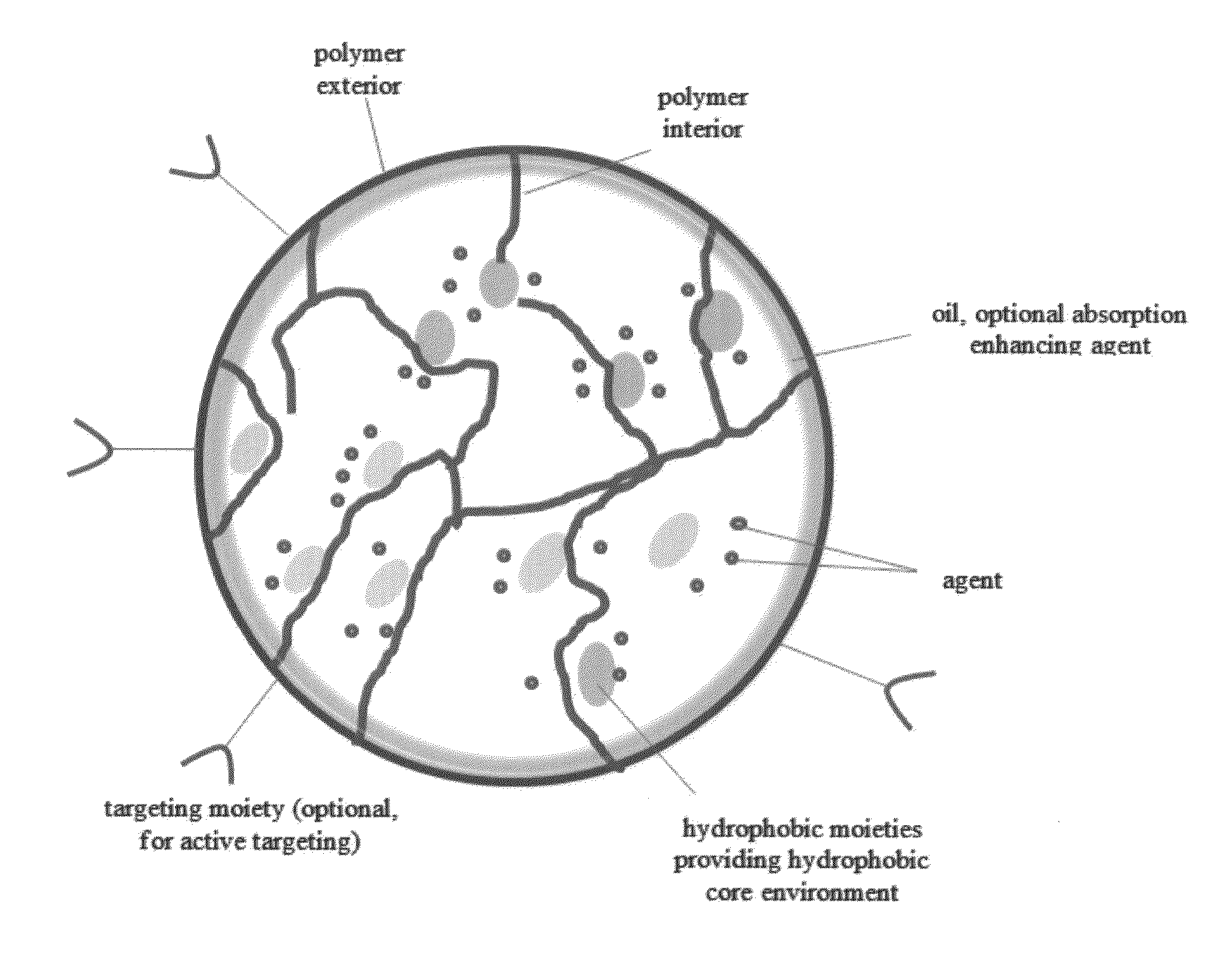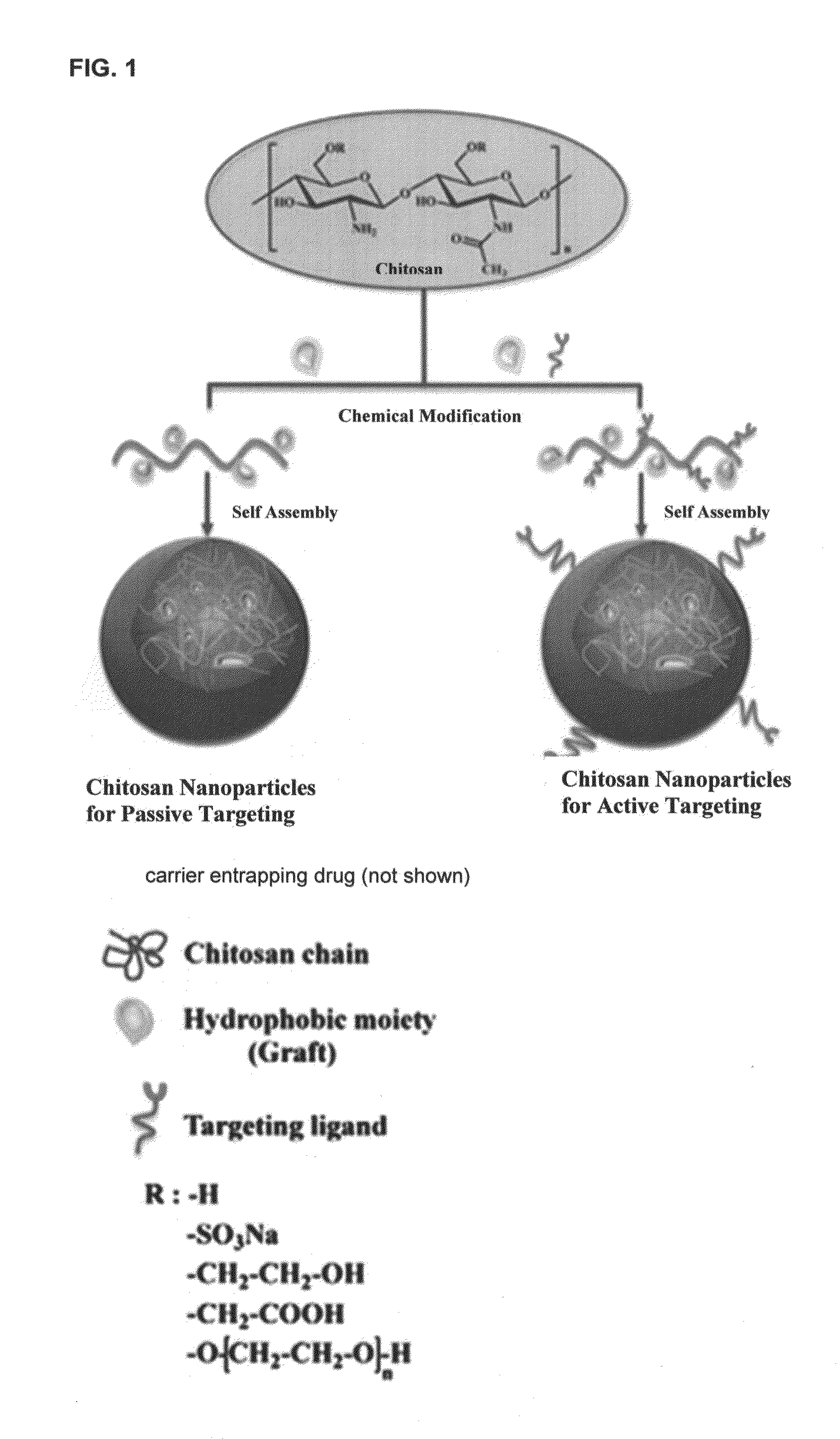Oral formulations of chemotherapeutic agents
a technology of chemotherapeutic agents and oral formulations, which is applied in the field of oral formulations, can solve the problems of ineffective oral administration of many pharmacologically active compounds, inability to effectively administer oral routes, and inability to effectively infiltrate the inflamed leakage, so as to increase the probability of binding and effectively infiltrate the leakage across the inflamed. leakage
- Summary
- Abstract
- Description
- Claims
- Application Information
AI Technical Summary
Benefits of technology
Problems solved by technology
Method used
Image
Examples
example 1
Oral Paclitaxel Formulation
[0067]Native cyclodextrins (CDs) α, γ and β, Citric acid, sodium chloride, pepsin and sodium phosphate dibasic were supplied by Sigma Aldrich. Crystalline cyclosporine extra pure was received from API supplier (99.9%). N,N-dimethyldodecylamine-N-oxide- (LDAO) was purchased from Sigma. The tetrapolymer P-αβγ-CD was synthesized by a fusion method Digest Journal of Nanomaterials and Biostructures 7 (2012) 155-164. Paclitaxel was purchased from Aventis Pharma or Sigma Chemicals.
[0068]Briefly, a mixture of known amount (20% w / w) of natural cyclodextrins (α, β, γ), citric acid (5% or so) and sodium phosphate dibasic (1-2%) was transferred into a sterile glass container which was maintained at a temperature ranging between 30-35° C. with high speed stirring. Paclitaxel at 50% by wt or 90 to 180 mg / per capsule, was dissolved in a mixture of ethyl alcohol and polyoxyethoxy castor oil (70:30) and kept at a room temperature. To this mixture, 20% by wt CsA was added, ...
example 2
In Vivo Study
[0074]This study was conducted to assess the oral bioavailability, tolerance, and toxicity profile of the formulation of Example 1 in animal models.
[0075]One set of experiments was performed in 21 female C57BL6 mice, 8 weeks of age. They were housed and handled according to institutional guidelines. Food and water were given ad libitum. All of the animal experiments were performed in full compliance with a protocol approved by the University Animal Use Committee.
[0076]Tumorigenic mouse ovarian surface epithelial cells were developed following a spontaneous transformation event in vitro with a clonal cell line (ID8) used for these studies. Female C57BL6 mice 8 weeks of age were injected intraperitoneally (ip) with 6×106 ID8 cells. Tumor nodules were allowed to grow to an estimated volume of 200-300 mm3 prior to treatment. Tumor volumes were estimated using the formula of length×width×height directly measured with calipers. Each animal was weighed at the time of treatment...
example 3
Human Clinical Study
[0097]Pre-treatment evaluation included a complete medical history and complete physical examination. An interim history including concomitant medications taken, toxicities, and performance status were registered, and a physical examination was performed. Hematology was checked twice weekly after courses 1 and 2 and weekly after subsequent courses. Blood chemistries, including liver and renal function, serum electrolytes, total protein, and albumin and glucose levels, were checked weekly. All toxicities observed were graded according to National Cancer Institute common toxicity criteria. Dose-limiting toxicity was defined as grade 4 granulocytopenia lasting more than 5 days, grade 4 thrombocytopenia of any duration, or any grade 3 or 4 nonhematologic toxicity except alopecia and untreated nausea and vomiting. Tumor measurements were performed every other cycle. Responses were evaluated according to the WHO criteria.
[0098]Patients meeting the fol...
PUM
| Property | Measurement | Unit |
|---|---|---|
| body weight | aaaaa | aaaaa |
| body weight | aaaaa | aaaaa |
| carrier size | aaaaa | aaaaa |
Abstract
Description
Claims
Application Information
 Login to View More
Login to View More - R&D
- Intellectual Property
- Life Sciences
- Materials
- Tech Scout
- Unparalleled Data Quality
- Higher Quality Content
- 60% Fewer Hallucinations
Browse by: Latest US Patents, China's latest patents, Technical Efficacy Thesaurus, Application Domain, Technology Topic, Popular Technical Reports.
© 2025 PatSnap. All rights reserved.Legal|Privacy policy|Modern Slavery Act Transparency Statement|Sitemap|About US| Contact US: help@patsnap.com



